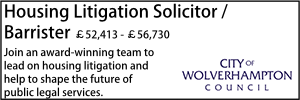Tighter damp and mould regulations set to impact registered providers
- Details
Six months after the conclusion of the inquest into the tragic death of Awaab Ishak, Matthew Bown and Amy Cowap outline the various measures set to be implemented to ensure tighter regulation of registered providers of social housing, with a specific focus on damp and mould issues.
How prevalent is damp and mould in social housing?
The Awaab Ishak case rightly gave cause for introspection within the social housing sector. It led to review and action by the Housing Ombudsman, the Regulator of Social Housing and Michael Gove, the Secretary of State for Levelling Up, Housing and Communities (among others).
On 22 November 2022, the Regulator of Social Housing (RSH) wrote to all registered providers of social housing (RPs), asking them to provide evidence on:
- Their approach to assessing damp and mould issues in their properties, including evidence on how they assess the existence of damp and mould defined as a category 1 or 2 hazard within the Housing Health and Safety Rating System (HHSRS).
- Their most recent assessment of the prevalence and extent of damp and mould hazards within their properties.
- The action they were taking to remedy damp and mould issues and hazards identified, as well as the steps they were taking to ensure properties met the Decent Homes Standard.
- How RPs were ensuring that individual cases of damp and mould were identified and dealt with quickly and efficiently.
After considering the RPs’ responses, in publishing its initial findings on 2 February 2023 the RSH estimated that less than 0.2% of properties owned and managed by RPs had the most serious damp and mould problems. These are described as a category 1 hazard, which would fail the Decent Homes Standard. The RSH further estimated that 1-2% of properties have serious damp and mould problems (category 2) and a further 3-4% have notable damp and mould. These estimates were based on a response rate of 99% and the RSH's latest Statistical Data Return showed that there were 1,614 RPs which combined provide approximately 4.4 million properties.
The estimates given by the RSH would suggest that up to a quarter of a million properties owned and managed by RPs are affected (to some degree) by damp and mould. This clearly highlights the prevalence of this issue across the social housing sector and demonstrates the need for further action to be taken.
Statutory timeframes in housing condition cases
The Social Housing (Regulation) Bill — announced by Michael Gove in February 2023 — is intended to deliver Awaab’s Law and requires landlords to fix reported health hazards within specified timeframes, while introducing greater powers for the Housing Ombudsman. The Bill has passed its third reading in both the House of Lords and House of Commons. It is currently back before the House of Lords, who must consider the amendments to the Bill proposed by the House of Commons. The Department for Levelling Up, Housing and Communities hope that the Bill will become law in this parliamentary session.
The most significant of those proposed amendments would see the introduction of a new Section 10A into the Landlord and Tenant Act 1985. This would apply to a lease of a property in England — a relevant social housing lease to which Section 9A of the Act applies. Under the proposed provisions of this new Section, the Secretary of State must make regulations to require landlords to take action in relation to prescribed hazards that affect (or may affect) a property within the timeframes specified in the regulations. This is the first time that we will see the imposition of a statutory timeframe in housing condition cases (save for Environmental Protection Act claims). Further, it would be an implied term of a relevant lease for a landlord to comply with all prescribed requirements, though they would have a defence to any allegation of failure to comply if it could be proven that all reasonable endeavours were used to avoid a breach.
Further steps to address damp and mould
The Housing Ombudsman has continued to encourage landlords to take further steps in investigating and addressing problems with damp and mould, in addition to ensuring that they have a dedicated damp and mould strategy. However, the Housing Ombudsman has also demonstrated that it is prepared to investigate landlords that are alleged to have failed in their obligations to properly investigate damp and mould issues affecting their properties, as evidenced by the number of recent investigations that have been opened.
The RSH has recently introduced a Tenant Satisfaction Measures (TSM) Standard which requires that, as of 1 April 2023, RPs collect and publish a range of information, including on areas such as safety checks, repairs and complaints. The TSM Standard has been introduced by the RSH as a step towards the introduction of more active consumer regulation and it believes that this will be a useful tool for tenants to scrutinise the performance of RPs and give suggestions as to how they can improve.
New guidance and regulation
The Department for Levelling Up, Housing and Communities has recently confirmed that it has finished its review of the HHSRS, within which it considered how the system could be made more accessible for landlords and tenants. No timeframe has been given for the publication of the review findings, though we anticipate that this will result in substantial changes to the ratings system which has been in place since 2006.
The Department for Levelling Up, Housing and Communities has also confirmed that it will carry out what it describes as a rapid review of existing guidance on the health impact of damp and mould in homes, with new guidance set to be published by summer 2023.
The RSH has said that it will introduce more active consumer regulation of social housing from April 2024, including inspections of RPs. The RSH has stressed that the quality of properties — including (but not limited to) damp and mould and repairs services — will be a key focus of this new regulation.
Watch this space
There are a variety of different measures on the horizon aimed at ensuring tighter regulation of RPs, with a specific focus being placed on damp and mould. These measures offer additional means by which tenants can pursue issues with substandard social housing. RPs must ensure that their damp and mould and repairs policies are up to date, as well as actioning any reports of outstanding repairs in accordance with the timeframes set out in their policies. They must also ensure that there is a system in place to highlight any failure to comply with these timeframes.
Ultimately, it is now more important than ever for RPs to take a proactive approach to repairs. At a time when resources are already tightly stretched, this is a very challenging time.
Matthew Bown is an Associate and Amy Cowap is a Solicitor at Brabners.
Must read
Fix it fast: How “Awaab’s Law” is forcing action in social housing
Housing management in practice: six challenges shaping the sector
Why AI must power the next wave of Social Housing delivery
Sponsored articles
Unlocking legal talent
Walker Morris supports Tower Hamlets Council in first known Remediation Contribution Order application issued by local authority
15-01-2026 11:00 am
20-01-2026 5:00 pm


































